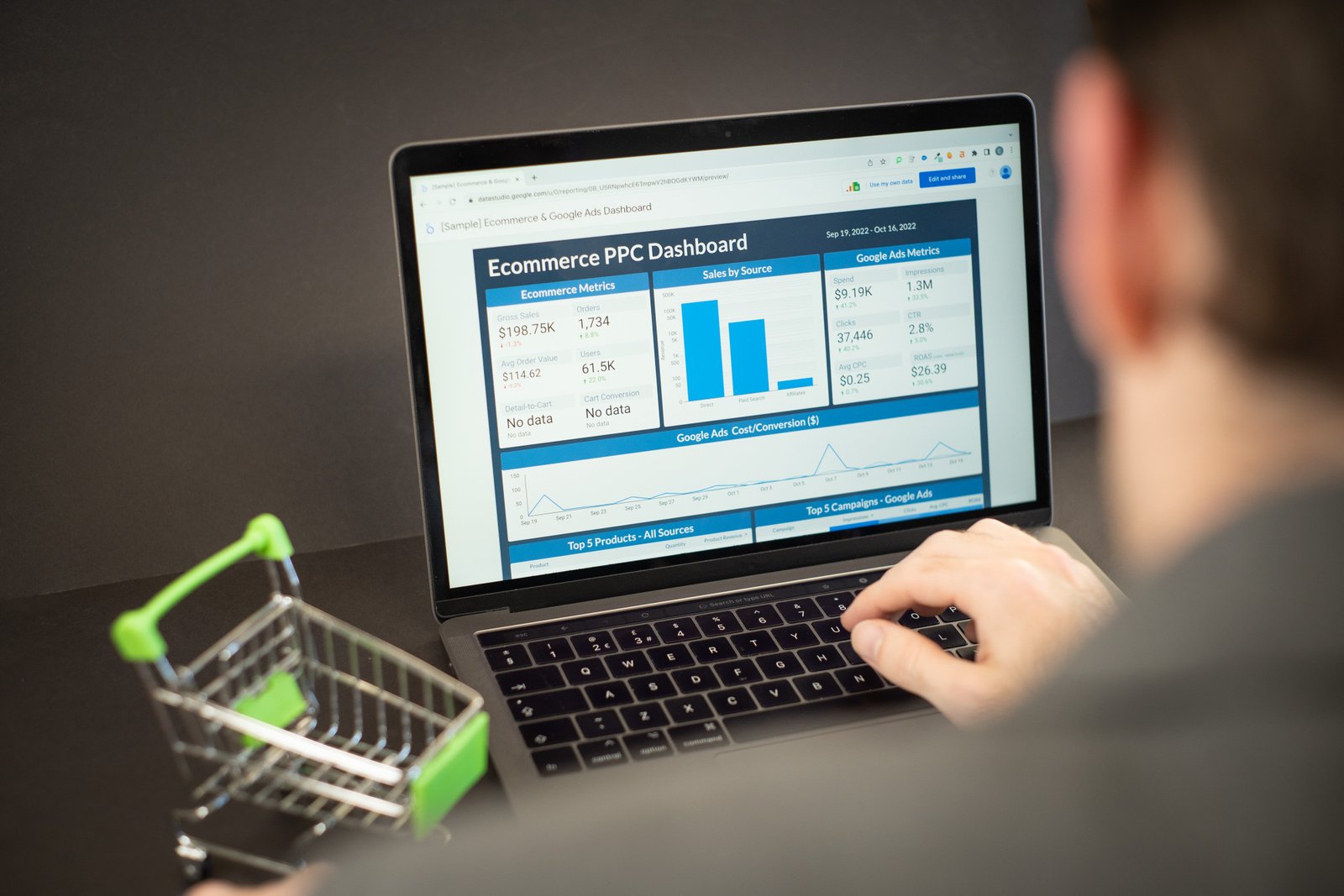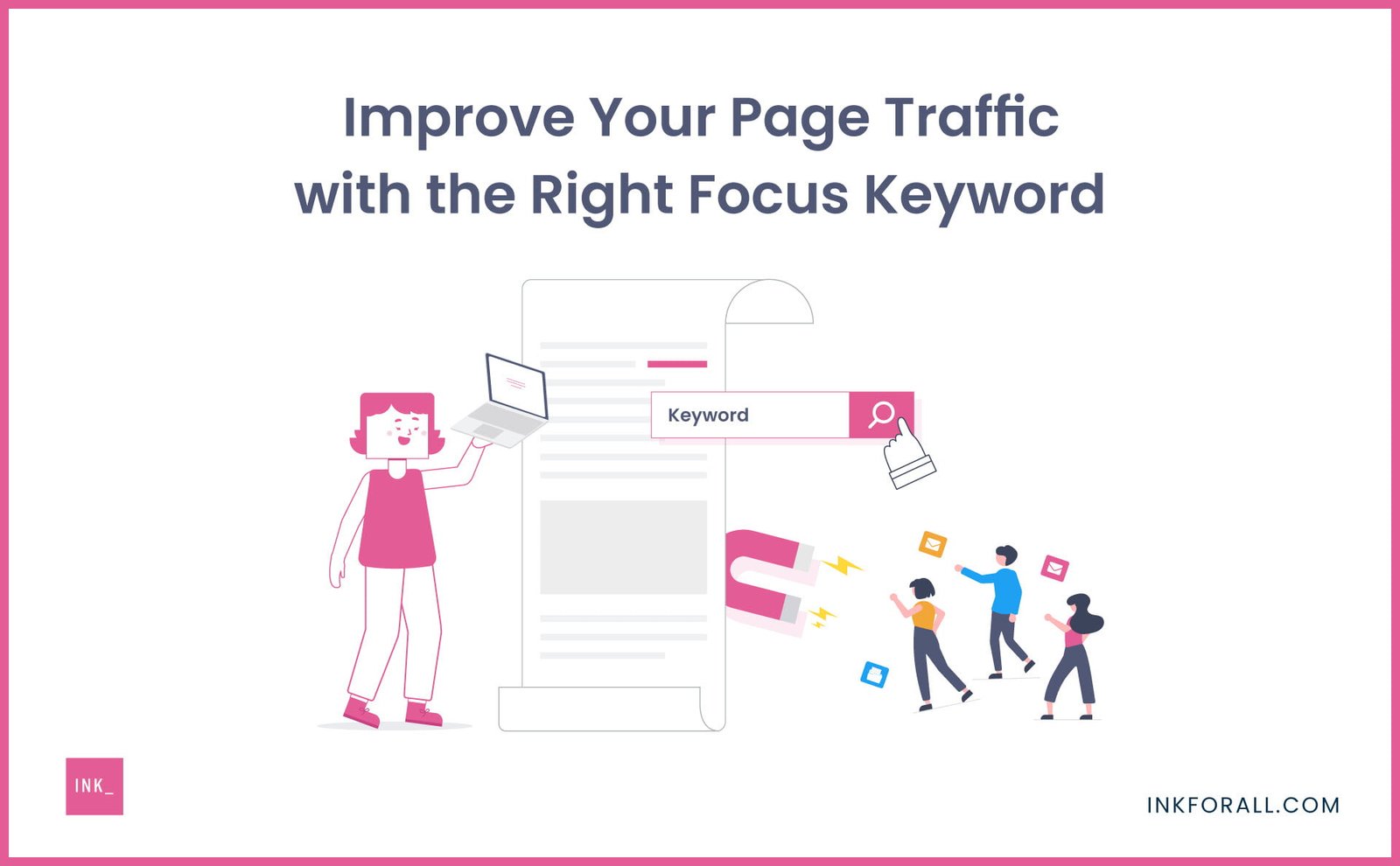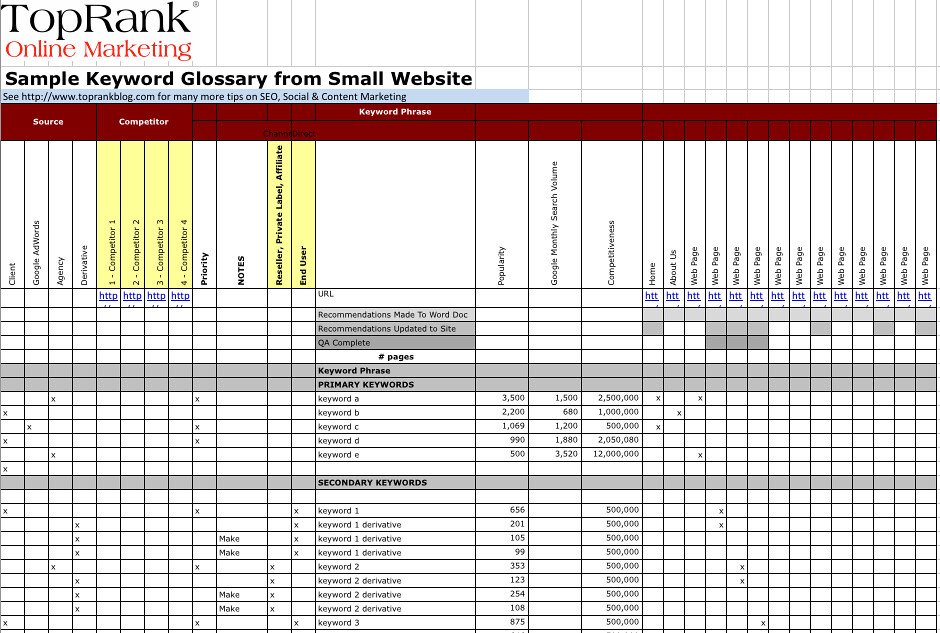In the vast and ever-evolving digital landscape of e-commerce, striving for perfection is not merely a distant dream but a concrete goal that businesses relentlessly pursue. Amidst countless endeavors to boost online sales and drive more traffic to their websites, one indispensable tool continues to reign supreme – Search Engine Optimization (SEO). In this comprehensive guide, we delve into the untapped potential of optimizing product pages to unlock unparalleled e-commerce performance. Embark on a journey where creativity meets neutrality, as we unveil the secrets to crafting the perfect SEO strategy for your online business. Get ready to revitalize your product pages and catapult your brand to the forefront of search engine listings!
Table of Contents
- – Unveiling the Art of Product Page Optimization: Key Strategies to Boost SEO Rankings
- – A Closer Look at On-Page SEO Techniques for Product Pages: Unleashing the Power of Keywords and Metadata
- – From Captivating Content to Compelling CTAs: Crafting Engaging Product Descriptions for Better Conversion Rates
- – Unleashing the Potential of Image Optimization: Best Practices to Enhance SEO and User Experience
- Q&A
- Future Outlook

1. Keyword Research: The Foundation of SEO
Let’s begin our journey into unlocking perfect SEO by focusing on the crucial step of keyword research. Understanding the words and phrases your potential customers are using when searching for products is the key to optimizing your product pages.
Start by brainstorming a list of relevant keywords that are closely related to your product. Then, utilize keyword research tools like Google Keyword Planner, SEMrush, or Ahrefs to expand your list and discover new keyword opportunities. Look for long-tail keywords – those specific phrases with low competition but high search volume – that are most likely to drive targeted traffic to your website.
Remember, keywords shouldn’t be stuffed unnaturally into your content. Instead, strategically incorporate them into your product titles, descriptions, meta tags, and headings to help search engines understand the relevance of your pages.
2. Compelling and Unique Product Descriptions
When optimizing your product pages, don’t underestimate the power of well-crafted product descriptions. Gone are the days of boring bullet points. Instead, think of your product descriptions as an opportunity to tell a story that engages and persuades your potential customers.
Start by identifying your target audience and addressing their pain points or desires. Give them a reason to choose your product over the competition through unique selling propositions, such as highlighting key features, benefits, or any special offers. Remember to use persuasive language, but avoid hype or misleading claims.
Utilize descriptive subheadings and incorporate bullet points to break up text and make it easier to read. Include high-quality images or videos to showcase the product from different angles or in use. By optimizing your product descriptions, you not only enhance your SEO but also provide a remarkable user experience, ultimately increasing conversions and customer satisfaction.

– Unveiling the Art of Product Page Optimization: Key Strategies to Boost SEO Rankings
One of the key strategies to boost SEO rankings for your e-commerce business lies in the art of product page optimization. By employing effective techniques, you can ensure that your product pages not only attract more organic traffic but also lead to higher conversion rates. Let’s delve into some essential tips to help you unlock the perfect SEO potential for your product pages.
1. Keyword Research: Understand your target audience and the keywords they are using to search for products similar to yours. Incorporate these keywords naturally into your product titles, descriptions, and headers. Don’t forget to include long-tail keywords as well, as they can help you rank for more specific searches.
2. Compelling Product Descriptions: Write unique, engaging, and informative product descriptions that accurately showcase the benefits and features of your products. Use persuasive language to convince potential customers to make a purchase. Additionally, consider including customer reviews or testimonials to build trust and credibility.
3. Clear and High-Quality Images: Visual appeal goes a long way in driving conversions. Ensure that your product images are high-resolution, properly formatted, and optimized for fast loading times. Utilize alt tags to describe the images, making them more discoverable by search engines.
4. User-Friendly Navigation: A well-structured and intuitive navigation menu enhances the user experience and helps search engines understand your website’s architecture. Include categories, subcategories, and related products to enable easy browsing, ensuring that visitors can find what they’re looking for effortlessly.
5. Mobile Optimization: With the increasing use of mobile devices for online shopping, it’s crucial to optimize your product pages for mobile responsiveness. Test your pages on various devices to ensure they are fully functional and visually appealing on different screen sizes.
Remember, optimizing your product pages for SEO is an ongoing process. Monitor your website analytics, track keyword performance, and keep up with the ever-changing SEO trends to stay ahead of your competition. With these strategies in place, your product pages will not only rank higher on search engine result pages but also provide an enhanced user experience, leading to increased sales and business growth.
– A Closer Look at On-Page SEO Techniques for Product Pages: Unleashing the Power of Keywords and Metadata
In order to unlock the full potential of your e-commerce website, it is crucial to pay attention to on-page SEO techniques specifically tailored for product pages. By harnessing the power of keywords and metadata, you can significantly enhance your website’s visibility and drive more organic traffic to your online store.
Keywords play a vital role in optimizing product pages for search engines. Consider conducting thorough keyword research to identify relevant and high-converting terms that your target audience is likely to search for. Incorporate these keywords naturally into the page’s title, headings, and product descriptions, making sure to maintain a balance to avoid keyword stuffing. Supplement these efforts with compelling and descriptive meta titles and descriptions for each page, as they serve as the first interaction between your website and potential customers.
Another essential aspect of on-page SEO for product pages is optimizing metadata. Take advantage of HTML tags such as “title” and “alt” attributes to provide search engines with context about your products. Utilize appealing and concise titles that accurately describe your products while including relevant keywords. Similarly, optimize your image alt tags to improve accessibility and increase the chances of appearing in image searches. Remember that search engines cannot “see” images, so these tags are crucial for understanding the content of your visuals.
– From Captivating Content to Compelling CTAs: Crafting Engaging Product Descriptions for Better Conversion Rates
From Captivating Content to Compelling CTAs: Crafting Engaging Product Descriptions for Better Conversion Rates
When it comes to optimizing your product pages for better conversion rates, captivating content and compelling call-to-actions (CTAs) play a vital role. Let’s delve into some effective strategies that can help you craft engaging product descriptions that drive results:
- Know your target audience: Understanding your target audience is crucial in creating product descriptions that resonate with them. Research their needs, preferences, and pain points, and tailor your descriptions accordingly.
- Highlight benefits: Instead of solely focusing on features, emphasize the benefits that your product offers. Illustrate how it solves a problem or makes their lives easier. By showcasing the value your product brings, you’ll capture the attention of potential customers.
- Create a sense of urgency: Incorporate persuasive language that creates a sense of urgency. Highlight limited-time offers, exclusive deals, or scarcity factors to encourage immediate action. This can instill a fear of missing out (FOMO) and nudge customers towards making a purchase.
Moreover, it’s essential to utilize persuasive CTAs that guide your audience towards taking the desired action. Here are a few tips to make your CTAs more compelling:
- Be clear and concise: Keep your CTAs short and straightforward. Use action verbs and avoid ambiguity. Clearly state what action you want your visitors to take, such as “Buy Now” or “Add to Cart”.
- Use persuasive language: Incorporate persuasive language that encourages action. Instead of a generic “Submit” button, consider using phrases like “Get Your Discounted Item” or “Start Transforming Your Life Now”.
- Design and placement: Pay attention to the visual design and placement of your CTAs. Make them prominent, use contrasting colors that grab attention, and ensure they are easily clickable on both desktop and mobile devices.
By implementing these strategies and crafting engaging product descriptions with compelling CTAs, you’ll not only optimize your product pages for enhanced e-commerce performance but also drive better conversion rates, ultimately boosting your online business’s success.

– Unleashing the Potential of Image Optimization: Best Practices to Enhance SEO and User Experience
In today’s fast-paced digital world, image optimization has become an essential aspect of enhancing both SEO and user experience on your e-commerce website. By implementing the best practices in image optimization, you can unlock the full potential of your product pages, leading to improved search engine rankings and increased conversions.
One crucial aspect of image optimization is ensuring that your images are of high quality and properly compressed. This helps in improving website load speed, making it a crucial factor for both SEO and user experience. Utilize tools like Adobe Photoshop or online platforms such as TinyPNG to compress your images without compromising their quality. Additionally, consider using the optimal image file format – JPEG for photographs and PNG for images with transparency.
Another important aspect of image optimization is providing relevant alt text for each image. Alt text (or alternative text) is a brief description of an image that helps search engines understand what the image is about. It is also vital for users who may have visual impairments and rely on screen readers to navigate your website. Including descriptive and keyword-rich alt text not only improves your website’s accessibility but also boosts SEO by providing valuable information to search engine crawlers. Bear in mind that alt text should be concise, yet descriptive enough to accurately convey the content of the image.
Q&A
Q: What is SEO and why is it important for e-commerce performance?
A: SEO, or Search Engine Optimization, is the process of improving a website’s visibility and rankings on search engine result pages. It plays a vital role in e-commerce performance as it helps drive organic traffic to product pages, ultimately increasing the chances of conversions and sales.
Q: How can one optimize product pages for better SEO?
A: There are several key steps to optimize product pages for enhanced SEO performance. These include conducting keyword research to identify relevant and high-ranking keywords, optimizing product titles and descriptions with these keywords, writing unique and compelling content, using high-quality images with proper alt tags, and ensuring fast website loading speeds. Additionally, optimizing URL structures, incorporating customer reviews, and implementing social sharing buttons can further boost SEO.
Q: Why is keyword research important for product page optimization?
A: Keyword research is crucial as it helps in identifying the most relevant and popular keywords that potential customers are using to search for products online. By strategically incorporating these keywords into product page content, titles, and descriptions, businesses can significantly improve their chances of ranking higher on search engine result pages, leading to increased organic traffic and potential sales.
Q: What are some effective ways to write compelling product descriptions?
A: To write compelling product descriptions, it is important to highlight the unique features and benefits of the product, using persuasive language to engage potential customers. Including specific details, focusing on the target audience’s needs and desires, and addressing potential customer concerns can make the content more relatable and appealing. Additionally, incorporating storytelling elements, such as explaining the product’s origin or sharing real-life customer experiences, can further captivate the audience.
Q: How do customer reviews impact product page SEO?
A: Customer reviews play a significant role in SEO for product pages. Positive reviews not only build trust and credibility but also act as a form of user-generated content that can improve search engine rankings. Search engines consider user-generated content as valuable, organic information that adds relevance and authority to a webpage. Encouraging customers to leave reviews and displaying them prominently on product pages can greatly enhance SEO performance.
Q: How can social sharing buttons contribute to the optimization of product pages?
A: Social sharing buttons allow customers to easily share product pages on their social media platforms, increasing the visibility and potential reach of the page. When shared, product pages are exposed to a wider audience, which can lead to more organic traffic and potential sales. Additionally, social shares can generate valuable backlinks, creating valuable signals for search engines to determine the relevance and popularity of a product page, thus boosting its SEO performance.
Q: What role does website loading speed play in e-commerce SEO?
A: Website loading speed is crucial for search engine optimization as it directly impacts user experience. Slow-loading websites can frustrate and deter potential customers, negatively affecting bounce rates and overall user engagement. Search engines prioritize websites that offer fast loading times, as it ensures a seamless and satisfactory user experience. Optimizing website loading speed, through techniques like cache optimization and image compression, can significantly improve SEO performance and overall e-commerce success.
Q: Are there any additional tips for enhancing product page SEO that you recommend?
A: Yes, a few additional tips include optimizing URL structures to be user-friendly and keyword-rich, utilizing schema markup to provide search engines with more detailed product information, implementing breadcrumbs to enhance site navigation, and optimizing images with descriptive file names and appropriate alt tags. Furthermore, regularly monitoring and analyzing SEO performance through tools like Google Analytics can help businesses identify areas for improvement and continuously refine their product page optimization strategies.
Future Outlook
In conclusion, unlocking the art of perfect SEO for your e-commerce product pages can truly be the game-changer your business needs. By following the steps outlined in this guide, you have taken an exciting leap towards optimizing your online presence and boosting your e-commerce performance.
Remember, SEO is not a one-time endeavor but rather an ongoing process. Stay up-to-date with the latest trends and algorithms to continuously refine and adapt your strategies. Embrace the power of keywords, delve into the minds of your target audience, and craft compelling content that resonates with them.
Don’t forget the importance of a user-friendly website design. Optimize your product pages by ensuring fast loading times, intuitive navigation, and irresistible visuals. A seamless and enjoyable shopping experience will not only entice customers but also increase the likelihood of repeat visits and conversions.
Finally, leverage the power of analytics and data to measure the effectiveness of your SEO efforts. Monitor your website’s performance, track user behavior, and identify areas of improvement. This invaluable information will allow you to make data-driven decisions and continuously optimize your product pages for enhanced e-commerce success.
So, as you embark on this SEO journey, remember that unlocking perfection is a continuous process. Keep learning, experimenting, and refining your strategies. With dedication, creativity, and a deep understanding of your customers, your e-commerce performance will soar to new heights.
Wishing you nothing but success in your SEO endeavors!

